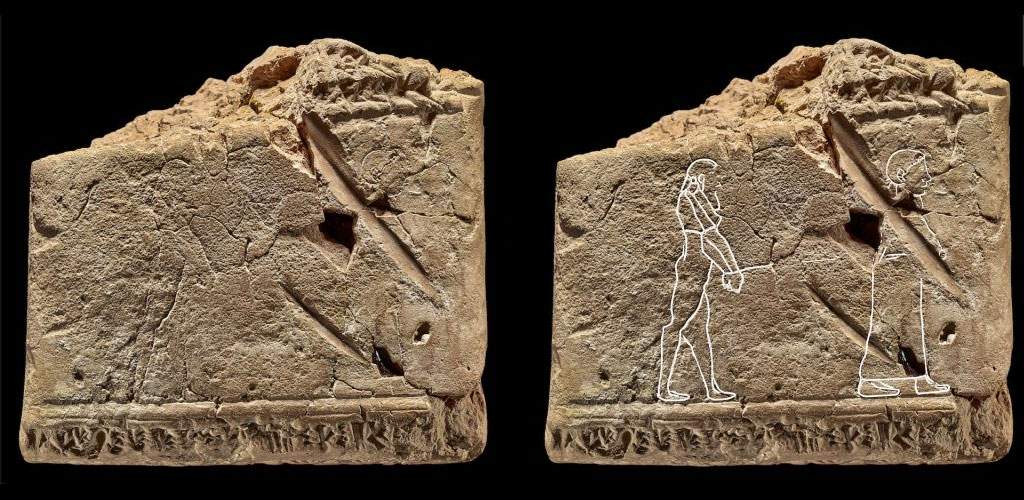The world’s oldest known depiction of a ghost has been discovered: it is contained in a Babylonian clay tablet. The study that led to this result bears the signature of Irving Finkel, one of the world’s leading Assyrologists, a leading expert on cuneiform writing on clay tablets from Mesopotamia, and curator of the Near East Department at the British Museum. The tablet in question, which can be dated to 3,500 years ago, is part of the museum’s collection: it is much ruined and the figures engraved on it are barely distinguishable, but they are recognizable nonetheless. The two figures represent, according to Finkel, a spirit brought back to life (the one on the left, the man with the beard) and a woman (on the right), depicted in the act of guiding him with a rope tied directly to the probable ghost’s wrists.
According to the scholar, the tablet was part of a kind of guidebook for exorcists, aimed at getting rid of ghosts that haunted the living, focusing on why the deceased came back to manifest themselves in the world of the living: in this case, it would be a ghost that was simply looking for company. The accompanying text provides prescriptions for a ritual that can return the ghost peacefully to the afterlife. In Babylonian culture, the presence of spirits and ghosts was generally not considered troubling, but it could happen that some ghosts bothered the living, in which case the intervention of a magician or exorcist was necessary to drive them back into the afterlife. And it was in a magician’s library that the British tablet was probably kept.
It is an “absolutely spectacular ancient object,” and one that had hitherto been underestimated, Finkel explained to the Guardian. “It’s obviously a male ghost, and he’s unhappy. We can imagine that a tall, skinny, bearded ghost wandering around the house got on the nerves of the people who lived there. The fact is that what this ghost needed was a lover.” This is evident, the expert explained, from the inscriptions accompanying the drawing and detailing the ritual, and found on the back of the tablet.
In Finkel’s opinion, the tablet had never been studied in depth (and moreover had never been exhibited to the public) since its date of acquisition in the 19th century, because no texts appear in the drawn part, and in addition, the figures are very ruined. However, according to Finkel, it is at this point a record-breaking object: “who can think,” he also told the Guardian, “of having a depiction of a ghost older than this one?”
The discovery will be published in the book The First Ghosts. Most Ancient of Legacies by Finkel, published by Hodder & Stoughton and due out Nov. 11: this is a volume devoted precisely to ghost culture in ancient Mesopotamian societies. However, Finkel jokes in conclusion with the Guardian, the scholar has never seen a ghost in his life, “not even in the darkest deposits of the British Museum.” And now his goal is to have the tablet displayed.
Pictured is the British tablet as it appears (left) and on the right with the figures of the ghost and the woman highlighted by James Fraser and Chris Cobb for Finkel’s book.
 |
| British Museum, history's oldest ghost discovered: it's on a Babylonian tablet |
Warning: the translation into English of the original Italian article was created using automatic tools. We undertake to review all articles, but we do not guarantee the total absence of inaccuracies in the translation due to the program. You can find the original by clicking on the ITA button. If you find any mistake,please contact us.